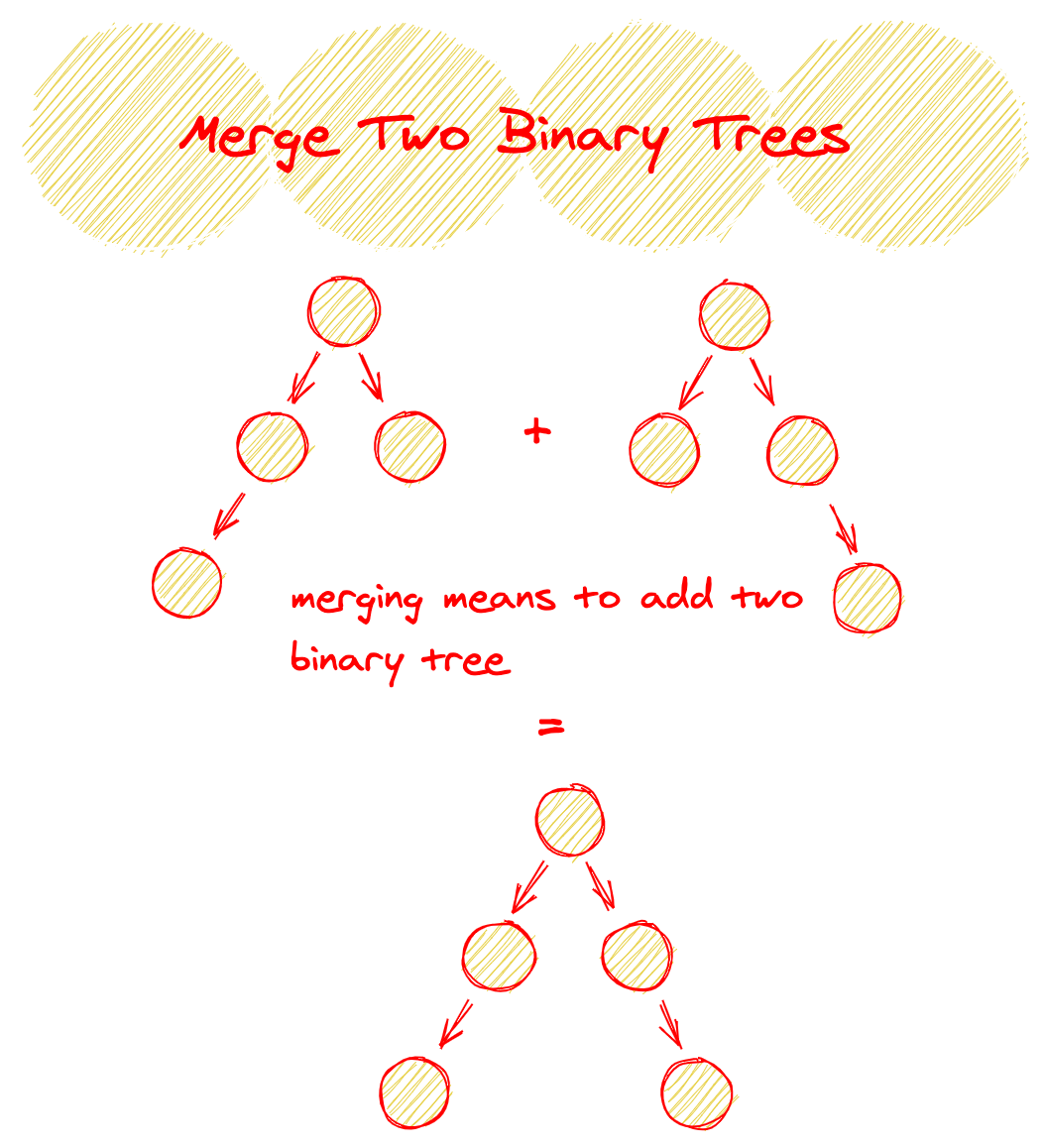Community
Start a ThreadNotifications
Subscribe You’re not receiving notifications from this thread.Merge Two Binary Trees (Main Thread)
Here is the interview question prompt, presented for reference.
Merging Two Binary Trees
The Problem Statement
You are presented with two binary trees. Your task is to merge these trees into a single, new binary tree.

The Overlap Rule
Here's the catch: some nodes in these two trees may overlap when you try to put them together. When that happens, the new node's value in the merged tree will be the sum of the overlapping nodes. For instance, consider the right leaf node in Tree 1 with a value of 2 and the right node in Tree 2 with a value of 3. In the merged tree, the corresponding node would have a value of 5 (2 + 3).
The No-Overlap Rule
If nodes don't overlap, the node value from the existing tree is simply carried over into the new tree.
An Example to Illuminate
Here's a quick example to make this more concrete:
Tree 1 Tree 2
1 2
/ \ / \
3 2 1 3
/ \ \
5 4 7
Resulting Merged Tree:
3
/ \
4 5
/ \ \
5 4 7
Boilerplate Code
You can assume that the nodes in the tree are defined as follows in JavaScript:
function Node(val) {
this.val = val;
this.left = this.right = null;
}
Constraints and Expectations
- Both trees will contain no more than
100,000nodes. - Node values will always be integers and fall in the range
-1,000,000,000to1,000,000,000. - Aim for a time complexity of (O(m+n)), where (m) and (n) are the number of nodes in each of the binary trees, respectively.
Your task is to start merging from the root nodes of both trees and produce a new tree that satisfies the above conditions.
You can see the full challenge with visuals at this link.
Challenges • Asked about 8 years ago by Team AlgoDaily
This is the main discussion thread generated for Merge Two Binary Trees.